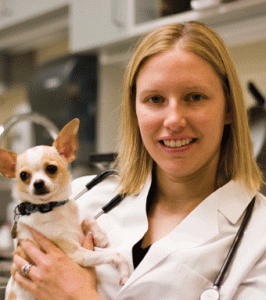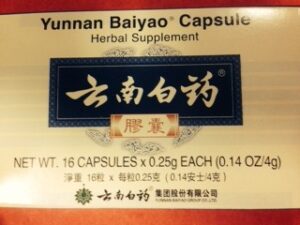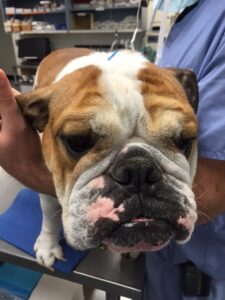-
Adopt
-
Veterinary Care
Services
Client Information
- What to Expect – Angell Boston
- Client Rights and Responsibilities
- Payments / Financial Assistance
- Pharmacy
- Client Policies
- Our Doctors
- Grief Support / Counseling
- Directions and Parking
- Helpful “How-to” Pet Care
Online Payments
Emergency: Boston
Emergency: Waltham
Poison Control Hotline
-
Programs & Resources
- Careers
-
Donate Now
 by Megan Whelan, DVM, DACVECC, CVA
by Megan Whelan, DVM, DACVECC, CVA
Angell Emergency and Critical Care Service
www.angell.org/emergency
617-522-7282
You need to think about the whole patient when treating critical patients with a multitude of issues. Subsequently, an integrative approach is helpful and becoming more common in veterinary medicine. Often our Critical Care Unit (CCU) patients can benefit from acupuncture, but it is not even contemplated unless you have had training in eastern medicine (acupuncture, herbal medicine etc.). I have included some situations where acupuncture could be considered, but really they are too numerous to count.
If you have a patient that is bleeding post-operatively (post-op spay) or an unstable hemoabdomen that needs to go to the operating room, you can try dry needling Tian-Ping. This point commonly called the “Scale point” due to its location on dorsal midline between T13-L1 can be helpful in stopping the hemorrhage. Of course, give blood/plasma as needed, but as an adjunct it can be useful. Recently in our CCU, we have been using the herb Yunnan Baiyao orally as an adjunct to prevent bleeding in cases that have hemoabdomens, pericardial effusions, and nasal epistaxis.
 Often, anxious dogs are common in a CCU setting and this can complicate an already difficult case. One indication for acupuncture could be in a post-op soft palate resection in a brachycephalic dog. By injecting B-12 at An-Shen to help calm a patient instead of writing an order for Acepromazine PRN may help prevent a chemically over sedated pet from aspirating and decrease oropharyngeal swelling by alleviating the constant panting.
Often, anxious dogs are common in a CCU setting and this can complicate an already difficult case. One indication for acupuncture could be in a post-op soft palate resection in a brachycephalic dog. By injecting B-12 at An-Shen to help calm a patient instead of writing an order for Acepromazine PRN may help prevent a chemically over sedated pet from aspirating and decrease oropharyngeal swelling by alleviating the constant panting.
Vomiting and nausea are very common in veterinary patients in the CCU. Knowing certain acupoints such as ST-36 (master point for GI tract), Shan Gen (appetite stimulant), PC-6 (master point for chest and abdomen/help prevent vomiting) can be especially useful after typical antiemetics have failed. The selection of points would be based on the pet’s constitution, and the pattern of the pet’s disease. If an owner tells me that they will euthanize a pet if the pet does not eat since they would not pursue a feeding tube; dry needling these points for 15 minutes can only potentially help the pet.
 We see many congestive heart failure cases and there are six typical Traditional Chinese Veterinary Medicine (TCVM) patterns for heart failure. The cases that we have difficulty managing usually are the pets that have pulmonary fluid coming from their mouth despite CRIs of lasix and nitroprusside. They essentially need mechanical ventilation (MV). If an owner is unwilling to do MV and the pet has collapse of Yang Qi, points for shock can be used as well. These same acupoints can be used in CPR cases. When doing resuscitation in patients that have arrested, the RECOVER guidelines should be followed. If a pet is not responding to conventional interventions, Dr. Huisheng Xie, founder of the Chi Institute, recommends needling GV-26 first in the philtrum at the level of the ventral limit of the nostrils. A hen-pecking technique at this site may be best for ephinephrine release. If this point does not help, KID-1, PC-6 through TH-5 can then be used.
We see many congestive heart failure cases and there are six typical Traditional Chinese Veterinary Medicine (TCVM) patterns for heart failure. The cases that we have difficulty managing usually are the pets that have pulmonary fluid coming from their mouth despite CRIs of lasix and nitroprusside. They essentially need mechanical ventilation (MV). If an owner is unwilling to do MV and the pet has collapse of Yang Qi, points for shock can be used as well. These same acupoints can be used in CPR cases. When doing resuscitation in patients that have arrested, the RECOVER guidelines should be followed. If a pet is not responding to conventional interventions, Dr. Huisheng Xie, founder of the Chi Institute, recommends needling GV-26 first in the philtrum at the level of the ventral limit of the nostrils. A hen-pecking technique at this site may be best for ephinephrine release. If this point does not help, KID-1, PC-6 through TH-5 can then be used.
If you have a feline patient with megacolon, and the owner is unwilling ‑ or it is too risky ‑ to place a pet under anesthesia for a de-obstipation, then enemas, lactulose, intravenous fluids and acupuncture can be used. There are 2 typical patterns for the Eastern diagnosis of megacolon, it is either Qi deficiency, or Yin and Blood deficiency. The acupuncture points would be selected based on what pattern they were exhibiting.
We treat many primary IMHAs and when they respond quickly it is great, but often we have patients that do not respond to the typical immunosuppressives. The traditional Chinese medicine pattern would need to be identified since there are different patterns. Typically for an extravascular hemolysis case, the main issues tend to be spleen Qi deficiency/blood deficiency. So selecting acupuncture points that would tonify the Qi/Blood, support the spleen, and immunomodulating points such as (LI-4, LI-10, LI-14, ST-36, GV-14) would be best. If the patient has evidence of intravascular hemolysis, clearing the heat and damp would be important and thus direct your acupuncture approach. The use of herbal therapy is becoming more popular and for a non-responding, primary ITP case Gui Pi Tang may be helpful.
Though I have given some sweeping recommendations, every patient is different in their constitution, and how they may respond. Dr. Xie impresses upon his students that Eastern medicine is best at treating the individual especially during times of deficiency. I have given just a few examples, but many more come to mind such as the cat that is having an acute asthma attack that is not responding to typical interventions such as oxygen, steroids, and bronchodilators. Knowing LI-20, Bi-tong and Lung-hui acupuncture points can come in very handy. There are really countless uses for dry needling, aqua and electrical acupuncture in the CCU and it will likely become a more routine treatment in the critical care veterinary setting.
For more information, please contact Dr. Whelan at emergency@angell.org or call 617-522-7282.